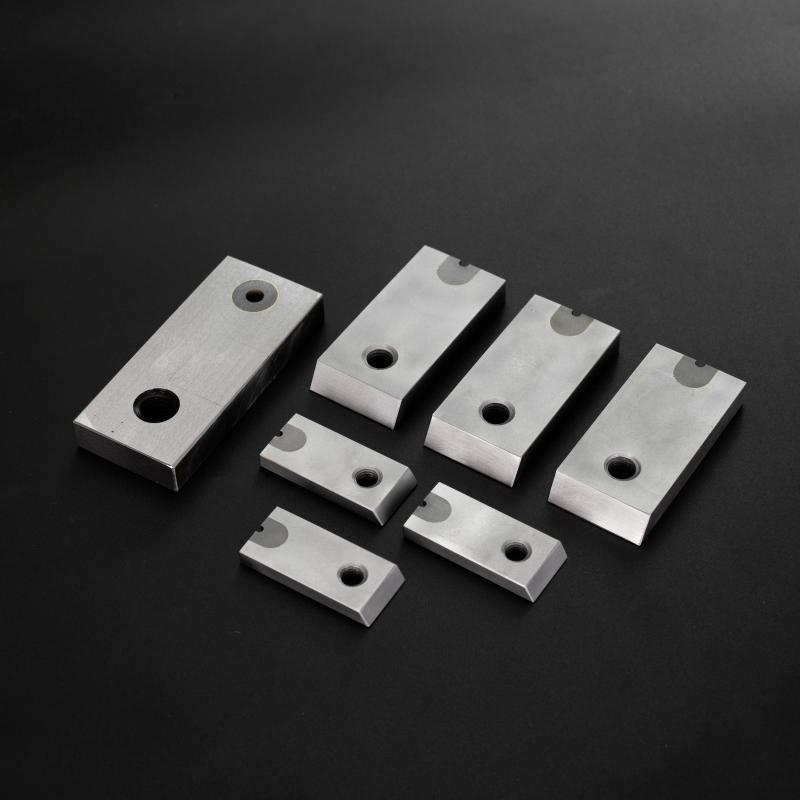Cut Off Blades are powerful tools used in various industries, including metalworking, construction, and automotive. While these tools are essential for efficient cutting and shaping of materials, they also pose significant safety risks if not handled properly. Whether you're using a handheld cut off tool or an industrial cutting machine, safety should always be your top priority. This article outlines key safety measures to help you minimize risks and ensure safe operation of Cut Off Blades.

1. Wear Appropriate Personal Protective Equipment (PPE)
One of the most important safety measures when working with Cut Off Blades is wearing the correct personal protective equipment (PPE). PPE serves as a first line of defense against potential accidents and injuries. Here's the essential gear to wear:
Safety Glasses or Face Shield: Protect your eyes from flying debris, sparks, and dust by wearing high-quality safety glasses or a full face shield. A face shield offers extra protection for your face and neck, which is particularly important in cutting operations where sparks or fragments are produced.
Hearing Protection: Continuous exposure to high noise levels can lead to hearing damage. When using cut off tools, wear earplugs or earmuffs to protect your hearing from the loud sounds produced during cutting.
Gloves: Wear sturdy, cut-resistant gloves to protect your hands from sharp edges and flying debris. Gloves also offer a better grip on the tool, reducing the risk of slippage.
Protective Clothing: Wear long sleeves and pants made from durable materials to protect your skin from sparks, hot surfaces, or metal shavings. Flame-resistant clothing is recommended in certain settings where the risk of sparks is higher.
2. Inspect Tools and Equipment Before Use
Before starting any cutting operation, always inspect the Cut Off Blade and related equipment for damage or wear. A faulty or worn-out tool can lead to dangerous accidents. Here's what to check:
Check the Blade: Ensure the cut off blade is free of cracks, chips, or any other signs of damage. A damaged blade can break during operation, causing severe injuries. If the blade is dull, replace it before use, as a dull blade can increase the chances of kickback or incomplete cuts.
Inspect the Tool or Machine: Ensure the tool or cutting machine is functioning properly. Check the power cord (for electric tools) or fuel system (for gas-powered tools) for any signs of wear, corrosion, or defects. Make sure the blade is securely mounted and properly aligned.
Test Equipment for Proper Functioning: Run a quick test on the equipment to ensure it operates smoothly. This will help you identify any issues early on and avoid accidents during operation.
3. Proper Handling of Cut Off Blades
Handling cut off blades correctly is essential for maintaining control and preventing accidents. Here are some key guidelines for proper handling:
Firm Grip: Always maintain a firm grip on the tool. A loose grip can result in the tool slipping or becoming uncontrollable, especially when cutting through tough materials. Use both hands if possible, and make sure your hands are dry to avoid slipping.
Secure Workpiece: Ensure that the material being cut is properly secured. Use clamps, vises, or other securing devices to hold the workpiece in place. A moving or shifting material can cause the blade to jam or kick back.
Stand in the Correct Position: When operating a cut off tool, stand in a stable position with your feet shoulder-width apart. This helps you maintain balance and control over the tool. Always cut at the correct angle to avoid unnecessary strain and ensure a clean cut.
Do Not Force the Tool: Allow the cut off blade to do the work. Forcing the tool can lead to the blade binding, overheating, or snapping. If the blade becomes stuck or bogged down, stop the operation and check for obstructions before continuing.
4. Use the Right Blade for the Job
Choosing the correct blade for the material you're cutting is crucial for both safety and efficiency. Using the wrong type of blade can cause overheating, excessive wear, or dangerous accidents. Here are some considerations when selecting a blade:
Match the Blade to the Material: Cut off blades are designed for specific materials such as metal, plastic, or concrete. Always ensure you are using the appropriate blade type for the material you are working with to avoid unnecessary strain on the tool and ensure a cleaner, safer cut.
Consider Blade Size and RPM Rating: The blade size and rotational speed (RPM) should match the specifications recommended by the manufacturer of your tool. Using a blade with an incorrect RPM rating could cause it to fail or become unsafe to use.
5. Maintain Proper Work Environment
The environment where you operate the cut off blade plays a significant role in safety. A clean, well-lit, and organized workspace can reduce the chances of accidents. Here's how to ensure a safe work environment:
Clear the Area of Hazards: Make sure the workspace is free from any clutter, loose materials, or flammable substances. Keep the area clean and tidy to avoid tripping hazards or interference during cutting operations.
Ensure Proper Lighting: Adequate lighting is essential to ensure you can clearly see what you're cutting. Dim lighting can cause strain on your eyes and may lead to mistakes or accidents.
Ventilate the Area: Cutting certain materials, such as metal or plastics, can produce fumes or dust. Ensure proper ventilation in the workspace to prevent inhalation of harmful particles. Use exhaust fans or air purifiers if necessary.
6. Keep Hands and Body Away from the Cutting Path
While using cut off blades, it is vital to keep your hands, arms, and other body parts away from the cutting path. Many accidents occur when operators get too close to the cutting area. Follow these precautions:
Maintain Safe Distance: Never place your hands or body in the line of the cutting blade. Always ensure that your hands are outside of the cutting area, especially when operating larger, more powerful tools.
Be Cautious with Kickback: Kickback occurs when the blade unexpectedly moves in the opposite direction. Always stay alert to avoid injuries caused by sudden, uncontrolled blade movements.
7. Proper Shutdown and Storage of Equipment
Once the cutting task is completed, safely shut down the tool and store it properly. Here’s how to safely store your equipment:
Turn Off the Equipment: Always switch off the tool and unplug it from the power source before cleaning, maintaining, or storing it. For gas-powered tools, ensure the fuel valve is closed.
Allow the Tool to Cool Down: Cut off blades, especially those that deal with metal cutting, can get extremely hot during use. Let the tool cool down before handling it or storing it.
Store in a Safe Place: Store your cut off blade and tool in a dry, secure location, away from moisture or excessive heat. Ensure the blade is stored safely to prevent accidental cuts when reaching for the tool.
The safety of workers using cut off blades is paramount. By wearing appropriate personal protective equipment, regularly inspecting tools, following proper handling procedures, and maintaining a clean and safe work environment, you can significantly reduce the risk of accidents. Prioritize safety at every step of the cutting process, and always adhere to the manufacturer's guidelines for both the tool and blade to ensure a safe and efficient operation.











